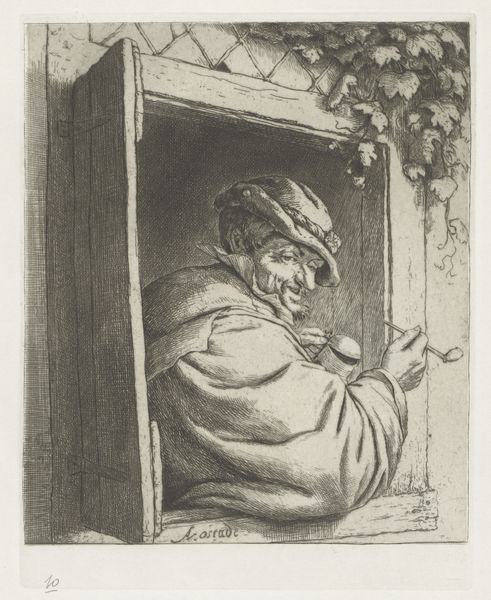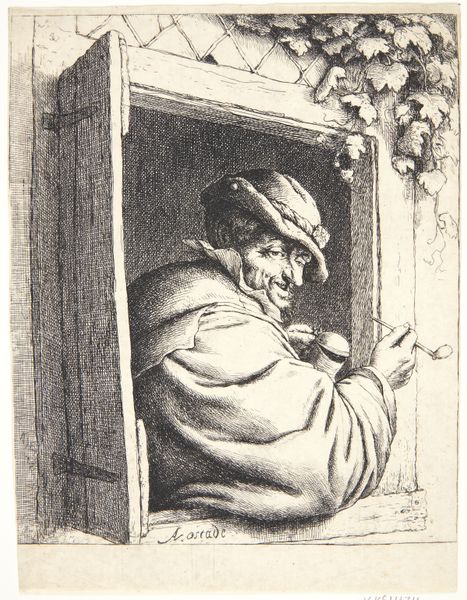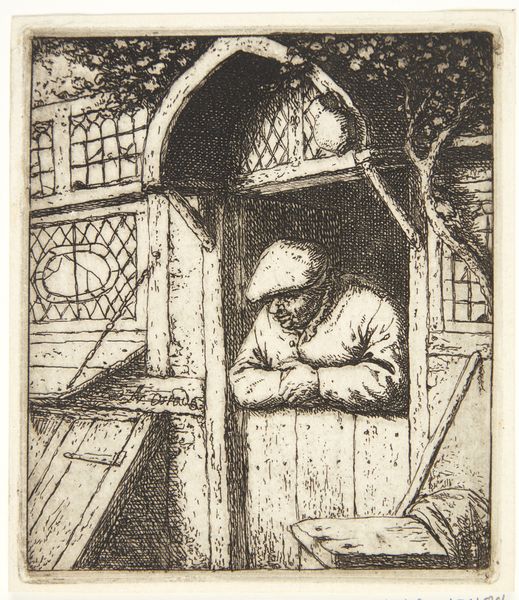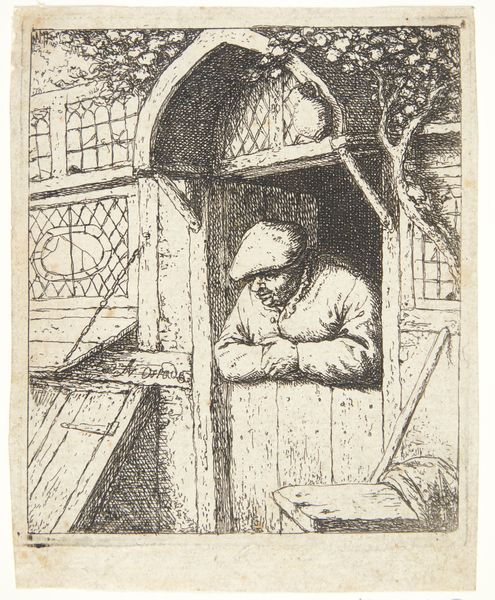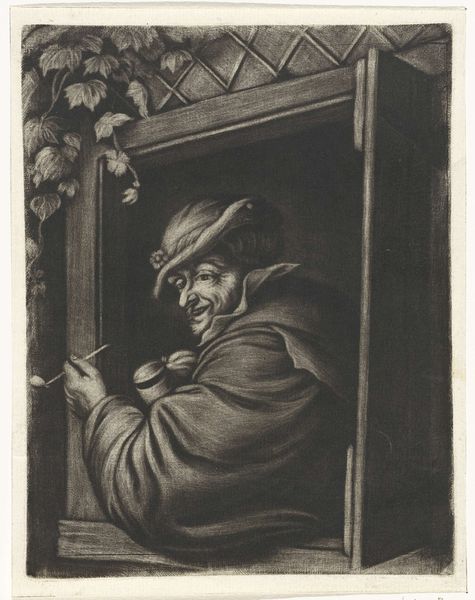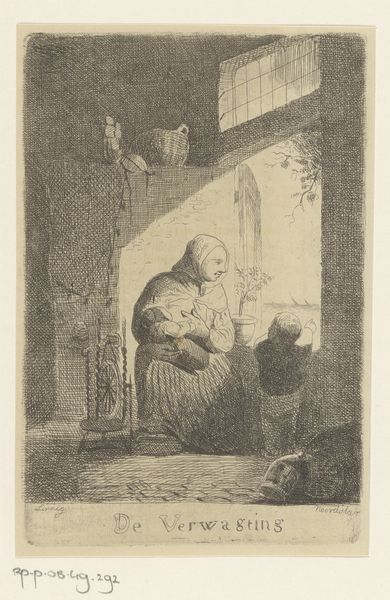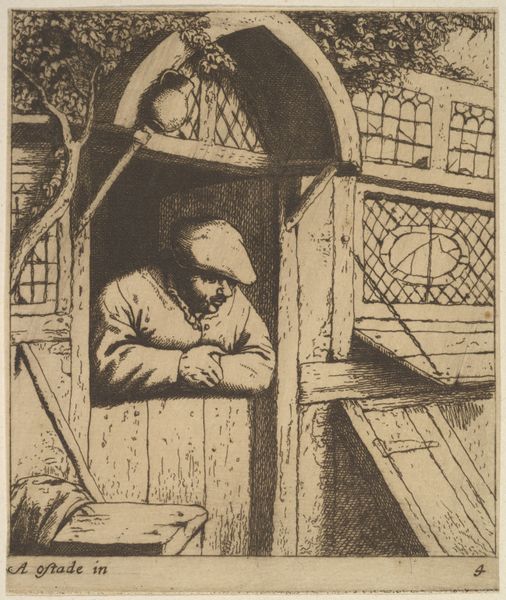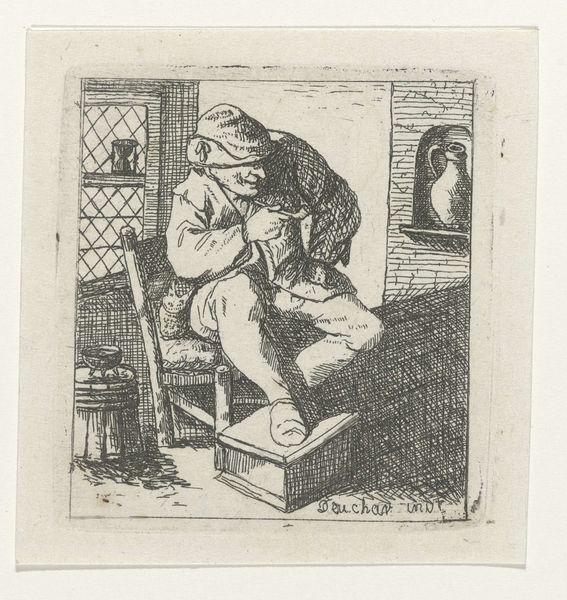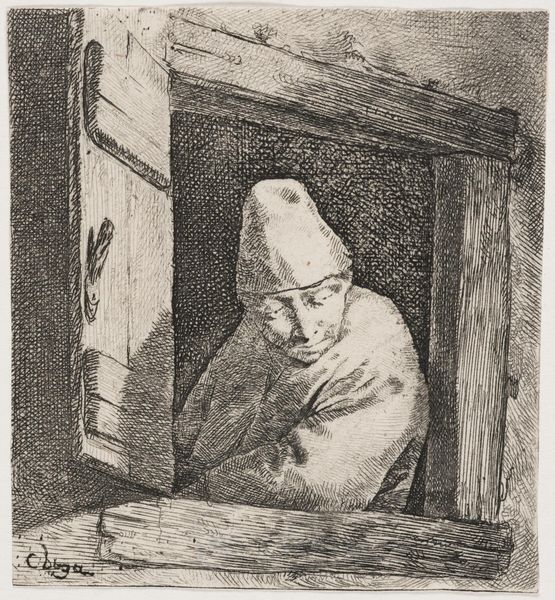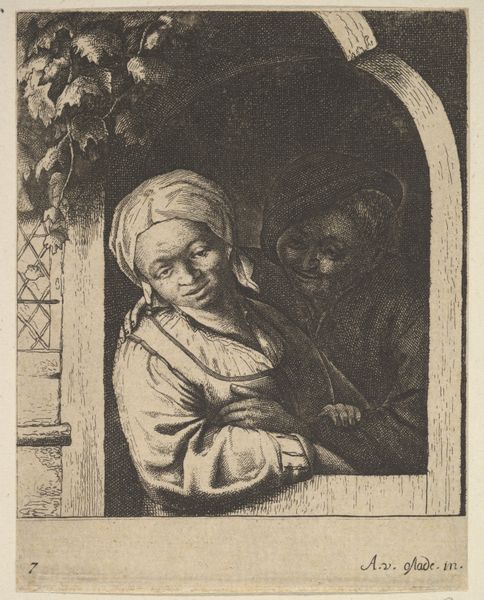
drawing, print, etching
#
portrait
#
drawing
#
dutch-golden-age
# print
#
etching
#
men
#
genre-painting
Copyright: Public Domain
Curator: Immediately striking is the sense of quietude. There’s something deeply still about this image, despite its mundane subject. Editor: Indeed. We’re looking at "Smoker at the Window," an etching by Adriaen van Ostade, created sometime between 1610 and 1685. Ostade was a master of Dutch Golden Age genre scenes, depicting everyday life. Curator: The composition pulls you in—that slightly sly, knowing smile, the way the figure is framed. It is the kind of imagery that remains lodged in collective memory. A feeling like glimpsing something intimate. It sparks so many associations for me: the romanticism of smoke, an era of leisurely contentment and the cultural embrace of tobacco. It presents this almost timeless character. Editor: And it does so without necessarily celebrating or condemning. The sitter’s expression is ambiguous. Is he content, lost in thought, or perhaps trapped within his own habits, his class? Considering that the globalization of tobacco was rooted in exploitation and colonialism, one could argue this smoker is complicit. How do we reconcile this man's calm enjoyment with those violent origins? Curator: Well, it’s that inherent tension, isn't it? A moral tightrope where personal pleasures become entangled with systemic injustices. But from a symbolic perspective, windows often represent liminal spaces, a passage between inside and out, the known and unknown. Smoking might signify transformation, inhaling possibilities and exhaling burdens. The vine hints to both indulgence, intoxication and to familial stability and wellbeing, and they remind the viewer that one side often comes at the cost of another. Editor: True. Ostade avoids straightforward judgements, doesn't he? This piece captures an historical period with the birth of capitalism that was becoming increasingly fascinated with representing "ordinary" people in everday settings. And despite how it idealizes "the everyday man" the piece does still reinforce certain socioeconomic narratives—like the visual glorification of a certain type of man enjoying the privileges of a emerging economy built on colonial violence. Curator: So we’re left pondering the complex layers embedded within this unassuming image. Editor: Exactly. “Smoker at the Window” provokes necessary conversations, urging us to consider the ethics interwoven within moments of everyday pleasure.
Comments
No comments
Be the first to comment and join the conversation on the ultimate creative platform.
